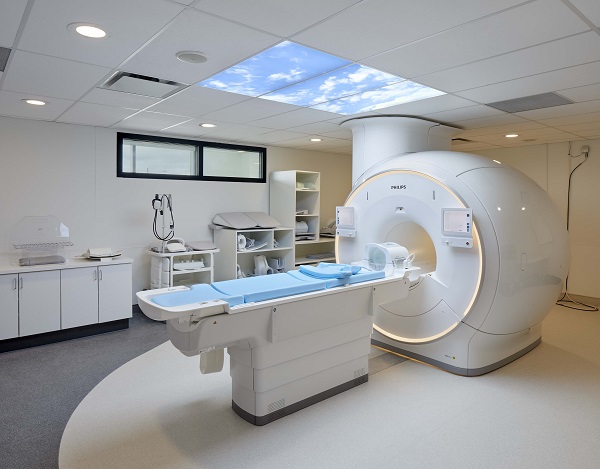By Christina Cindric
When we think about going to a hospital for care, we likely think about visiting the Emergency Department after a fall, having surgery to replace a bad knee, visiting a newborn grandchild or, unfortunately common during this past year and a half, being admitted with COVID-19 symptoms.
What’s not often top of mind, however, is going to a hospital for a routine x-ray, ultrasound, CT scan or MRI scan. That’s typically because of the longer wait times associated with accessing these services in a hospital. While this might have been the case in the past, Mackenzie Health continually strives to lower wait times for patients with most patients receiving a scheduled appointment within days. Patients also experience the convenience of managing their appointments and reviewing their results on their desktop or mobile device through MyChart, an online platform that puts patients in control of their health information.
Mackenzie Health now supports residents across western York Region at two full-service hospitals, each with state-of-the-art medical imaging capabilities and an expert team of radiologists at both sites ready to serve the community’s needs. Since Cortellucci Vaughan Hospital opened to the community in June 2021, Mackenzie Health’s capacity for medical imaging services has doubled. The 30,000 sq. ft. Medical Imaging department on the first floor of Cortellucci Vaughan Hospital can serve an additional 150,000 patients a year, representing almost 200,000 imaging exams. This is in addition to the medical imaging services already provided at Mackenzie Richmond Hill Hospital.
“The Medical Imaging department at Mackenzie Health offers an improved patient experience,” said Amir Soheili, Associate Vice President, Clinical Support and Support Services at Mackenzie Health. “With dedicated waiting areas for most procedures and a separation between inpatient and outpatient services, patients coming into the hospital for a scheduled MRI will use dedicated outpatient waiting areas and routes, in keeping with infection prevention and control best practices.”
At Mackenzie Health, state-of-the-art equipment, including high-definition CT and MRI scanners, help our expert team of fellowship-trained radiologists, specializing in a number of disciplines, diagnose injuries and diseases like cancer earlier and with pinpoint accuracy. They then deliver the information our patients and health care providers need to make the best, personalized treatment decisions. This all supports the goal of helping patients recover faster so they can get home sooner.
The imaging capabilities at both Mackenzie Richmond Hill Hospital and Cortellucci Vaughan Hospital feature a full range of high-resolution imaging technologies, including an upgraded and expanded Picture Archiving and Communication System (PACS) that securely stores and shares clinical scans and images and reports them across our two hospital sites. In this way, the care team has access to patients’ scans and results no matter which of our two hospitals they go to for care.
“As the future roadmap for this system evolves over the next few years, this system will also leverage an artificial intelligence (AI) algorithm that will be able to support our expert clinicians to make more accurate and efficient diagnoses,” adds Soheili. “When a patient receives a CT scan, for example, the system will sort through the hundreds of image slices and flag those of potential concern for the radiologist to review.”
The opening of a second hospital also tripled Mackenzie Health’s capacity for minimally invasive treatments with two interventional radiology suites at Cortellucci Vaughan Hospital which are in addition to the suite at Mackenzie Richmond Hill Hospital. Mackenzie Health’s interventional radiologists use imaging technologies to safely and accurately guide procedures such as the insertion of a stent to open a blocked artery or an embolization to stop a major internal bleed. These procedures often reduce or eliminate the need for more invasive surgical procedures and result in shorter hospital stays and recovery times for patients.
“Technology is changing our ability to care for patients in remarkable and hugely beneficial ways. In 10 years, what we do now in operating rooms will be done in an intervention suite because the lines between imaging and surgery are blurring,” said Dr. Peter Law, Chief and Medical Director of Medical Imaging at Mackenzie Health. “And the good news is these advances allow doctors to focus on the patient and let the technology enable care.”
Christina Cindric is a Senior Communications Consultant at Mackenzie Health.


